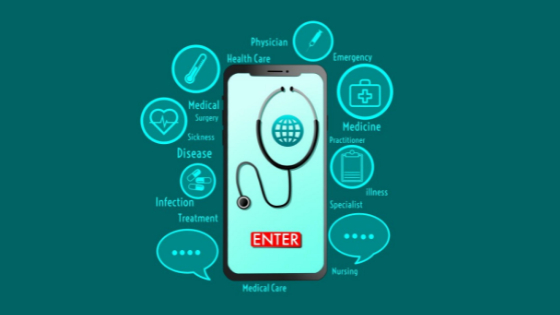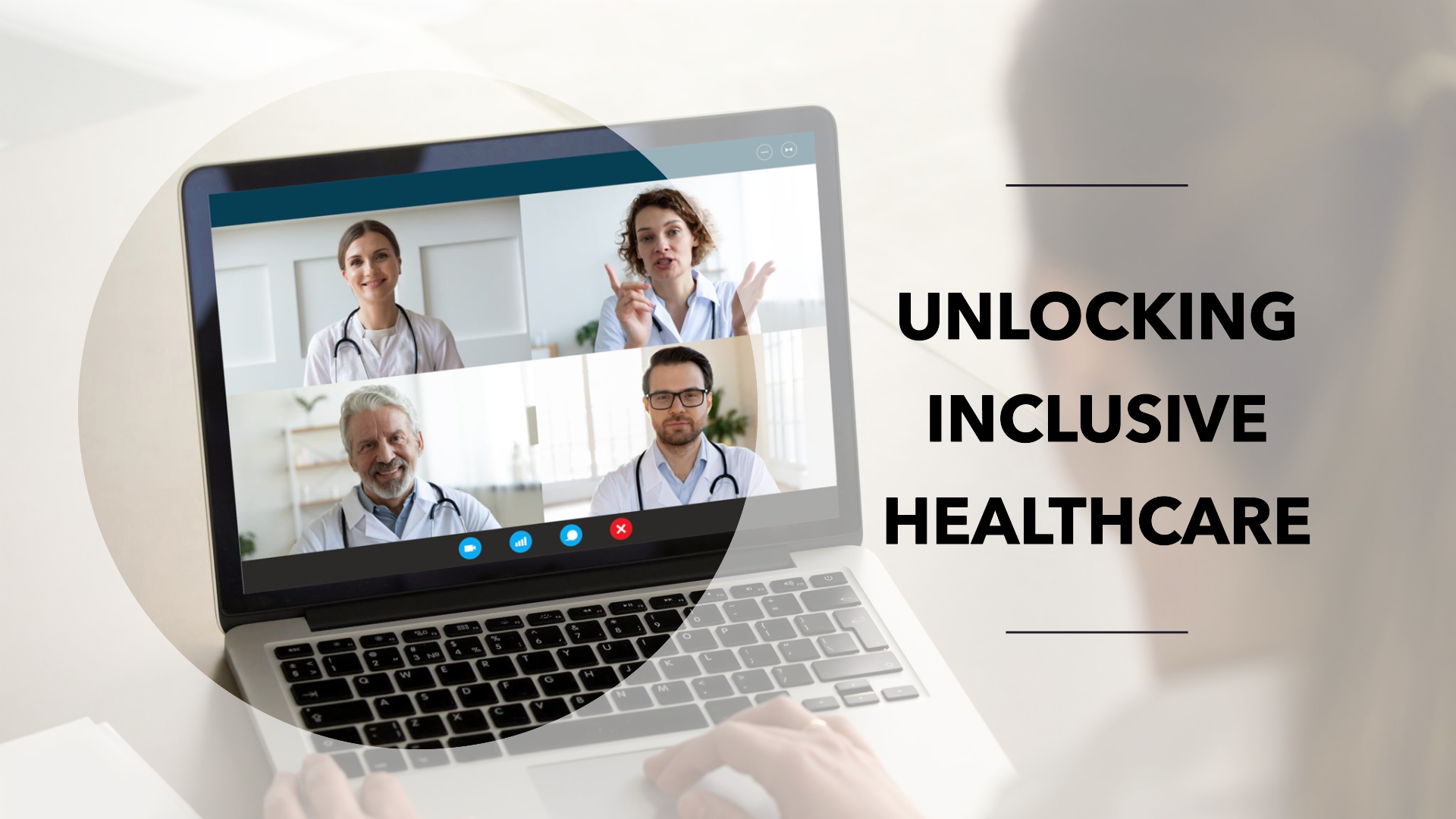The healthcare industry is undergoing a transformation as it adapts to the rapid rate of technological change. The world has seen an influx of new technologies that allow doctors to provide medical care remotely and keep them safe from patients.
This evolution will continue as healthcare providers explore ways they can improve patient outcomes while still providing access to care. While many people are familiar with digitalization, legacy systems still play an important role in the current state of healthcare.
In 2022, the world learned to adapt quickly, ushering in the rise of telehealth services and medical apps. These tools allowed doctors to fulfill their duty of saving lives while maintaining a safe distance from patients.
Healthcare Industry Being Disrupted By The Digital World
The healthcare industry has seen a number of changes in the last few years, with some new trends emerging. From the rise of telemedicine to the increased use of artificial intelligence (AI) and blockchain, there are a lot of exciting developments that are helping drive innovation in this field.
Healthcare is at an exciting crossroads, with new technologies and trends emerging every year. As we saw in the past few months, blockchain will continue to be one of the hottest topics in healthcare technology. Some experts believe that blockchain could be used to reduce costs by helping patients better manage their health and giving providers access to more complete data about their patients.
With an increased number of patients looking online for information and forward-thinking physicians who see technology as an aid to medicine, it’s time to explore 5 ways the digital world is influencing the healthcare industry:
- Artificial Intelligence in Healthcare Industry
- Augmented Reality & Virtual Reality
- Remote Patient Monitoring
- Bioprinting
- Telehealth Assistance
Artificial Intelligence in Healthcare Industry
The global pandemic of COVID-19 is a nightmare. It has left millions of people dead and many more infected. As the virus spreads and infects more people, the healthcare system is struggling to keep up with demand. The need for accurate, fast treatment is greater than ever before.
During this time, artificial intelligence (AI) confirmed its significance for the future of healthcare industry. From anticipating the worldwide spread of COVID-19 and examining the virus’ influence on mental health to helping analyze CT scans, AI improves the efficiency of analyzing global data. The impact of advanced technology is immense. It helps free up the time of clinical teams, which is crucial when people’s lives are at stake.
In addition to saving lives during emergencies like this one, AI has many other benefits: it can help doctors make better decisions about treatment, improve patient outcomes by sharing knowledge across different specialties and locations, increase access to care in rural areas where there are fewer specialists available; and more!
Augmented Reality & Virtual Reality
Augmented reality (AR) and virtual reality (VR) technologies have great potential to significantly improve the healthcare industry. For instance, VR already helps surgeons plan and perform complicated surgeries and eases patient discomfort with a number of different options instead of just taking a Vicodin pill. Especially for those who struggle with chronic pain, anxiety, or PTSD, VR comes as a safer and potentially more efficient alternative to drugs. As for AR technology, it is widely used by surgeons in the form of headsets that provide extra information to the practitioners while they are performing surgeries.
The technology also has many other applications in medicine: it can be used to train medical students on complex procedures, simulate emergency situations and help prepare doctors for real-life scenarios. This type of training helps reduce mistakes during surgeries or other treatments, which translates into fewer complications for patients and families alike.
Augmented reality is also being explored as a way to improve patient outcomes after surgery by providing them with additional information about their condition through 3D models of their body parts that can be manipulated with gestures or voice commands. For instance, this kind of technology could help patients visualize how an implant would look like once placed inside their body or how an organ will function properly after an operation
Remote Patient Monitoring
Telehealth has been around for a long time, but in the pre-pandemic era it was not widely used. The COVID-19 outbreak changed all that. Now, you can access telehealth services from your phone or computer and get help with an online appointment or remote patient monitoring.
Telehealth is a type of healthcare that allows patients to receive medical care remotely by telephone or video conferencing. In the pre-pandemic era, telehealth had many restrictions on its usage that made it difficult for patients to get the help they needed through these services. Now, however, there are many apps available so you can make an online appointment and receive a consultation without leaving home.
The most common use for telehealth is for remote patient monitoring (RPM). RPM allows patients to check in with a doctor or nurse when they need help but don’t want to leave their home or office. A nurse will call them on the phone or video conference with them and give them instructions over how best to manage their symptoms until they can see someone in person again. This is especially useful if you have COVID-19 because it prevents you from having any contact with other people while still allowing you access to medical assistance when needed without going somewhere public where
Bioprinting
Bioprinting is a method of creating 3D-printed human organs. As surreal as it sounds, that’s the future of healthcare industry that has already reached the stage of clinical testing. It works similarly to creating a standard 3D-printed object, but in this case, we are printing organs. First, a digital model of the tissue is created. Ideally, the organ should be created using the cells of the future host so that the probability of rejection is lower.
Bioprinting has already been around for quite some time, but its development has stalled due to the risks involved. The first bioprinted organ was printed in 2010 by Anthony Atala at Wake Forest University School of Medicine in Winston-Salem, North Carolina. He used an inkjet printer to print a bladder with live cells that were then implanted into a rat and survived for two weeks before they were removed and studied. Since then, scientists have successfully printed other organs including kidneys, blood vessels and hearts from human cells with varying degrees of success.
The biggest problem that scientists face when trying to develop bioprinting technology is getting their creations to work inside an animal or human body without being rejected by the immune system or causing other complications such as infections or tumors
Telehealth Assistance
Telehealth has been a mainstay of rural healthcare for a long time. But when COVID-19 hit, it became even more important than ever.
Before the pandemic, telehealth services had many restrictions that made them difficult to use. For example, you could only make an appointment for certain services over the phone and you couldn’t be seen by a doctor unless you were in their office or at home—which meant that if you were visiting family in another state and needed medical attention, there was no way to get it without flying back home first.
Post-pandemic, however, telehealth services became increasingly accessible and useful. Now, you can use any number of apps to make an appointment with a doctor from anywhere in the world via your phone or computer screen. And once you have an appointment scheduled? You can even use one of these apps to have your consultation with the doctor through video chat! This means that if you live in a rural area where there aren’t many doctors nearby or if you just don’t have time for lengthy office visits (or both), telehealth is exactly what you need to stay healthy!
I was inspired by Fast Company article to write this article. Contact us for more relevant details. To find out more about how we can help you with your Digital Healthcare Transformation, Healthcare organizational growth, or Healthcare brand positioning, please get in touch via phone +44 (0) 203 3620421 or via e-mail: info@digitalsalutem.com





